Pipe plugs can be used for a wide variety of purposes. They are most often used for the safe transport of pipes, to prevent leaks, and also as decorative items. What are the plugs and how to choose a device that meets certain requirements, read on.
Choice of plugs
The choice of plugs should be based on several factors:
- type of fitting;
- selection of material from which the plug is made;
- application rules.
What types of plugs are there
First of all, the classification of plugs is carried out according to the material from which the devices can be made. The following materials are used:
- Metal. The most popular are steel and brass plugs. The metal plug for pipes is strong enough, therefore it can be used for gas and sewer pipes. The only drawback is susceptibility to corrosion.

- Plastic and polyethylene. These fittings do not corrode, but they can deform when exposed to high temperatures and sunlight. The plastic plug has a low cost, and can be used as an internal plug for pipes.
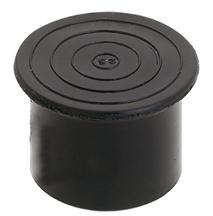
- Chrome plated metal. The plug made of this material is the most expensive. It is practically non-corrosive. It is mainly used as decorative element... For example, plugs for pipes for a fence.

- Rubber. Rubber pipe plugs are used to protect pipelines from dirt and debris. As a rule, they are not used as retaining elements, since they are very plastic and cannot be securely fastened.
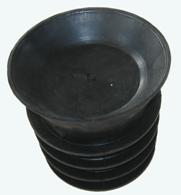
The scope of application of the fitting depends on the material of manufacture.
By design features, all plugs can be divided into four types:

- pneumatic plug. The device is installed using a pump that supplies air. During the air supply period, the plug expands and takes the shape of a pipe, thereby reliably closing the passage of gases or liquids. The pneumatic fitting can be used as a plug on a water pipe to temporarily block the flow of liquid;

- elliptical plug - a metal fitting that is welded. Can be used as a permanent plug on sewer pipe in an unused pipeline;

- flange plug. The product can be made of metal or rubber. The fitting is installed using bolts or specialized rivets, for which there are special holes in the upper part of the plug. The fitting can be used as a casing plug, as it is not only easy to install, but also dismantled at the right time.
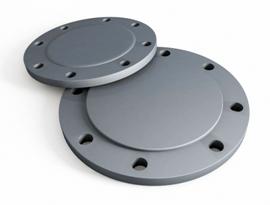
In addition, there are:
- shipping plugs necessary for the safety of pipes during transportation. Priority made of plastic;

- end caps. The pipe end cap can be made from any material. Mainly used to prevent clogging of pipes and unused piping sections.
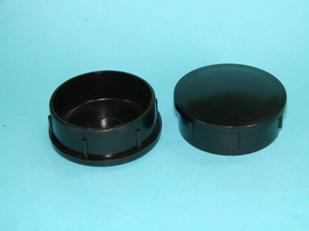
The choice of plug design should be based on the intended use of the product.
Fitting selection rules
To choose the correct plug, you need to rely on many factors. The selection algorithm is as follows:
- The most important factor is the purpose of the pipe:
- the plug on the gas pipe should be as reliable as possible. For this purpose, elliptical fittings are predominantly used, since the threaded connection is considered to be less strong;
- for hot water supply systems, metal fittings are used. From the high temperature of the passing liquid, rubber and plastic products can deform, which significantly reduces the strength of the plug;
- for water supply systems, you can use threaded, elliptical and flange plugs, the main thing is that they are correctly selected and installed.
- At the next stage, the choice of a stub should be based on its purpose:
- for temporary blocking, it is more expedient to use flange and pneumatic plugs;
- for long-term limitation of the pipeline, it is recommended to use threaded and elliptical devices;
- the decorative pipe plug must match the design of the product.
- When choosing a plug, it is important to take into account the material from which the pipe is made:
- the cap of a cast-iron pipe, as well as for any other made of metal, must also be metal;
- for plastic pipes it is more expedient to use plastic plugsif pipes are not used for hot water supply.
- The last factor influencing the selection of a fitting is the size and shape of the pipes:
- caps for round pipes can only be installed on round pipes;
- square pipe plugs and other shapes of shaped pipes are installed on the corresponding pipes. They can rarely be used for round pipes, but only as decorative elements;
- each plug must fully match the dimensions of the pipe.
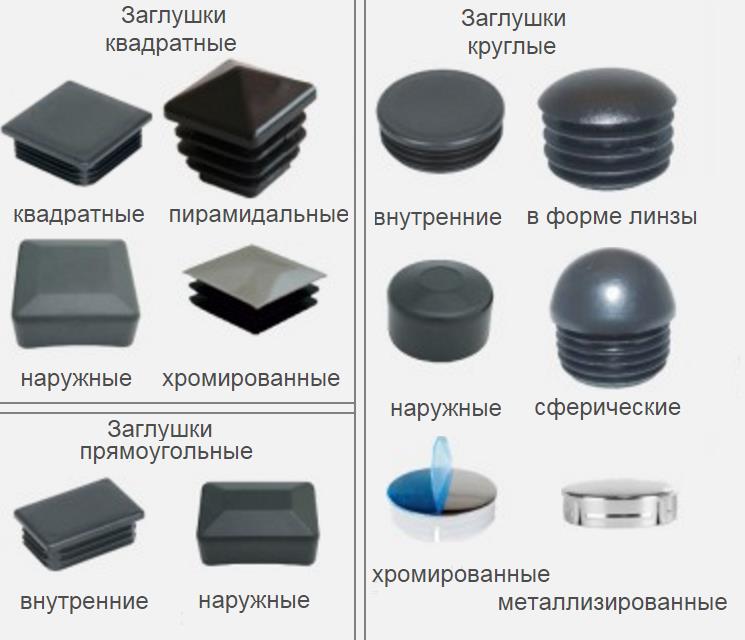
If you are guided by the above rules, then the choice of the plug will not be difficult.
In some cases, you may not purchase plugs, but make them yourself. For example, do-it-yourself plugs for profile pipes can be made from an ordinary sheet of metal by making a cut of the same size and section. Homemade plugs are installed by welding.
Installing plugs
Now let's look at how to put a plug on a pipe. In most cases, this operation does not cause difficulties even for people who do not have special knowledge.
An external plug for pipes is installed based on its design features. When installing fittings, the following rules must be followed:
- it is advisable to use a sealing material to seal the threaded connections. For example, fum tape is optimal for water supply pipes;
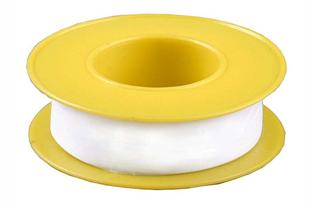
- when installing a pneumatic plug, compliance with safety rules and control of the amount of incoming air is required. Otherwise, the device may "burst";
- if an elliptical plug is mounted, then the fitting installer must know the simplest welding methods and strictly observe safety precautions when working with a welding machine;
- for blanking flanges, the fixing bolts must match exactly the dimensions of the prepared holes. Otherwise, the plug will not perform its function.
You can watch the video about the selection and installation of plugs using the example of fence pipes.
Removing plugs
To remove temporary plugs, you must:
- prepare all the elements necessary for the reconstruction or extension of the pipeline;
- stop supplying water or gas to the pipeline;
- if a flange or threaded plug is installed, then it is simply unscrewed with the help of locksmith tools;
- the elliptical plug is cut off with a grinder;
- the pneumatic plug is simply deflated.
Pipe plugs are widely used for transporting and temporarily limiting the capacity of a pipeline. Each fitting must be precisely sized and fit. Installation and removal of plugs is carried out in strict observance of the rules and safety measures. Also, the limiter can be made independently from available tools.
Use plastic pipe plugs of various kinds: round and profile. The purposes of their application are as follows:
- For overlapping end openings of different types of pipeline. Stubs can be temporary or permanent.
- For the manufacture of various containers under pressure: boilers, pneumatic and hydraulic devices, vessels.
- To avoid internal damage during pipe transportation.
Plastic plugs allow to protect pipes from debris and moisture getting into them, protect them from damage of various nature. For profile pipes, the use of a plug is the best way to seal the poles, for example, when making a fence. They are used not only for pipes, but also for other holes in various structures, which are used as decorative or supporting elements.
Plastic plugs for pipes are easy to install, economical and have a wide range of colors, shapes and sizes.
Types of plastic plugs
Caps for profile pipes are available in different shapes: rectangular, square and round. Square end caps are used for square profile pipes. The stiffeners of these plugs can be straight or tapered. Basically, they are placed in shaped pipes, from which fences are made. You can order any standard standard sizes of these products from us.
Rectangular plastic plugs do not fundamentally differ from square ones. They are also used for shaped pipes. Round plugs have different diameters and several stiffeners. They are made of high quality plastic with excellent elastic properties. Therefore, these products perfectly resist temperature extremes and various atmospheric phenomena, are distinguished by their durability and high wear resistance. We present plugs of all existing diameters. A wide variety of colors and sizes, low cost will allow you to make the best choice.
For sealing support pillars round plugs - the best option... They will not only protect the pillars from adverse influences, but also give them an attractive aesthetic appearance.
Buy caps for pillars (shaped pipes) in Moscow
Pipe plug - necessary and demanded fitting. At Metal XL you can choose these products of different types, shapes, sizes and colors. A wide assortment and optimal prices, high quality service - everything is for our clients.
We have the best rolled metal in Moscow so you can choose necessary materials for the manufacture of many different designs.
Plugs are used on pipes for a wide variety of tasks. In the oil and gas industry and work with pipelines, one cannot do without them, because with their help it is possible to emergency shut off the main line or part of it, reliably close the holes at the ends of the branch pipes and bends.
They use such important parts for example for the safe transportation of rental goods or even in the as decorative ornaments on finished structures. They give an aesthetic and finished look to the assembled product.
Types of plugs
Modern manufacturers produce a huge number of plugs. They are usually divided into types according to several differences. technical parameters. First of all, attention is paid to the design features of the end plugs and their material.
By design features, such products are divided into the following types:
- Threaded plugs used for pipes are designed to be used in conjunction with fittings and pipelines with threaded connections. It is very simple to mount such a plug, and reliable tightening of the thread allows you to forget about the possible breakdown of the section. Such parts are sold for $ 1-1.5;
- Pneumatic pipe plugs performare made of rubber. She is durable an inflatable rubber ball complete with a small pump attached to it. When pumped with air, the pipe plug expands, then completely blocks the hole. Spherical rubber plugs are priced at $ 10-20 for the simplest samples. Industrial equipment for blocking large pipelines may well cost from several hundred dollars;
- Transport pipe plugs have the form of a boot or cap, and a very simple one-piece design with adjustable mechanical fasteners, which is quite reasonable. After all, the task of these parts is to simply shut off the pipeline during transportation, at this time they are exposed to minimal loads. Transport covers for profile pipes are sold in stores for 20-50 cents;
- Elliptical plugs are made from sheet steel by stamping. Such plugs are considered permanent, they are mounted by welding, for example, on a gas pipe. They can be purchased for 40-80 cents;

- T the end cap for the pipe is used for the simplest tasks, when you just need to cover the end of the steel supports, that is, to prevent debris, moisture, etc. from getting inside. End decorative parts are a type of shipping, and therefore their price is approximately identical and equal to 30-60 cents;
- A pipe flange is a steel or rubber plate with cut holes for fixing bolts or rivets. The holes fit exactly the flange itself, so fixing them is very easy. Product price for steelpipes of this type are at the level of 5-15 dollars. Changes in price occur due to differences in thickness, dimensions, and material of the part itself.
By type in the material used, they are divided into the following types:
- The metal pipe plug is made of steel or brass. It all depends on the specific product and its purpose. Metal samples are strong and reliable, but corrosive and rather laborious in terms of installation, for example, on water pipesopoprovod;
- Polymer samples are made from durable polyethylene or lightweight plastic. Polyethylene decorative corks have a very low cost; at the same time, they also do not react at all to corrosion. However, upon contact with direct sunlight, they are gradually destroyed;
- Chrome decorative ends are a type of metal, but they are distinguished by an external beautiful shining appearance. Usingthey are mainly used to give pipes a decorative effect;
- Rubber models och they are very plastic and work as a protection against debris and dirt. They are not suitable for serious blocking of water pipelines, since the process of their installation consists in the usual pushing of the plug in the required area with the help of physical force.
Requirements depending on the characteristics of the pipes
Such parts are selected so that they exactly correspond to the features of specific pipelines. Moreover, both the material and its functional purpose are taken into account.
For example, a plug for a gas pipe must be extremely strong and reliable. Moreover, gas slightly surpasses water in its structure, and this already leads to increased requirements for sealing areas. Regular threaded samples or pneumatic plugs on the gas pipe will not work... It is better to install them on water pipes or other pipes.
For heating systems and hot water pipes are not recommended to take plastic and rubber products, as they can be damaged when high temperatures... In this case, quality metal is needed.
If necessary, block any type of hole on long time, use elliptical no or flanged pipe plugs.
The shape and profile of the highway also has an impact. In this case, the main requirement is full compliance with the dimensions of the pipe plug and its shape.
For example, a stub for shaped pipe 80 × 80 mm should have the same dimensions and completely cover its profile. Therefore, before you buy a product for
i have such uses, you need to make sure you make the right choice.
The shape of the edge also influences the fastening requirements of the end caps. Square pipe plugs cannot be attached using threads or flanges. They can only be welded or pushed mechanically.
Accordingly, it is very important to make sure that with such a fastening the part holds well and is capable of performing its functions.
Caps for round pipes, in terms of application, are much more functional. Which, however, is completely unsurprising. After all, it is pipes with a round profile in 95% of cases that are used to equip water mains and supply systems. Here requirements are already imposed not on the type of fastening, but on its quality and simplicity.
Using pneumatic plugs (video)
It is almost impossible to name specific generic types or types of stubs. There are too many of them on the market today.
Inflatable e pneumatic plugs for trubles are chosen when you need time immediately block any type of connection. They are convenient for their functionality, since the inflatable spherical balloons take the form of a pipeline.
Flange and elliptical plugs on steel pipes they are fastened most often, since they correspond to them in terms of the material being manufactured and the type of construction.
However, if 80 × 80 pipes are used not as pipeline elements, but as components of metal structures, then in such a situation, the choice of conventional end caps will be correct.
Plastic covers - plugs for metal pipes they are used only as transportation, or to prevent atmospheric precipitation with debris from entering the openings of structures, since they are not able to qualitatively block the channel.
Threaded plugs are good for their stable strength and the absence of any problems during installation, however, they should be bought only if inside or outside the edge already the thread is cut. Moreover, this thread must fully correspond to the one that is already on the plug. This refers to the type of thread and its direction.

When choosing protective-blocking torus end elements for profile pipes must pay attention to their shape. Typically profilethe pipes are not used as water supply, heating or transportation systems.
AND they often do metal fences, furniture, fences or equipment frames. Therefore, the plug for a profile pipe 80 × 80 mm is primarily assessed by its dimensions and shape, and then by all other factors. Spherical plugs are absolutely unsuitable for pipes in shape; rectangular or square ones are required.
It is also desirable to follow from the principle that the material of the selected element should be compatible with the material of the pipeline, or at least not conflict with it. For example, a plug for a plastic pipe made of plastic will last longer, and it is much easier to install it.
However, this rule has a number of exceptions. A metal-plastic line can transport hot water, and polyethylene samples are not able to interact qualitatively with such a carrier.... In this situation, you will have to think about how to connect metal-plastic pipes and spherical rubber or metal parts.
In the end, you can even block the hole yourself, as you can make a simple plug with your own hands. Such a structure is useduse of polyurethane foam and ordinary silicone sealant in two layers. A more traditional and even antiquated way is the use of dense wood and resin.
When repairing water supply networks, situations are possible when some sections of the old pipeline remain completely unused and need reliable blocking. Find out how to muffle a pipe by studying the material posted in our article.
Blocking methods
The simplest and most reliable way to seal pipes is to prepare the thread at their end and install a plug of a suitable diameter. Some home craftsmen advise in such a situation to use a metal bolt of the appropriate size, which is hammered into the hole, and then scalded around the circumference of the pipe. However, the use of these techniques is possible only in the case of a satisfactory condition of the end part of the metal pipe.
In the event that the state of the blocked area is assessed as "dilapidated" - you will not be able to use the options listed above. In this situation, the proven "old-fashioned" method is used, which involves driving a wooden plug of the appropriate size (the so-called "chopik") into the pipe hole.
It is recommended to make such a "plug" from waterproof wood, which is treated with resin in order to protect it from decay. Some time after driving into the pipe, the chopik swells and reliably blocks the hole from leaks. As for plastic pipes, it is not recommended to use wooden plugs to plug them.
Sealing plastic pipes
Immediately, we note that there are two types of sealing of plastic pipes: permanent and temporary. The choice of one or another blocking method is determined not only by the pipe material, but also by the state of the entire pipeline as a whole.
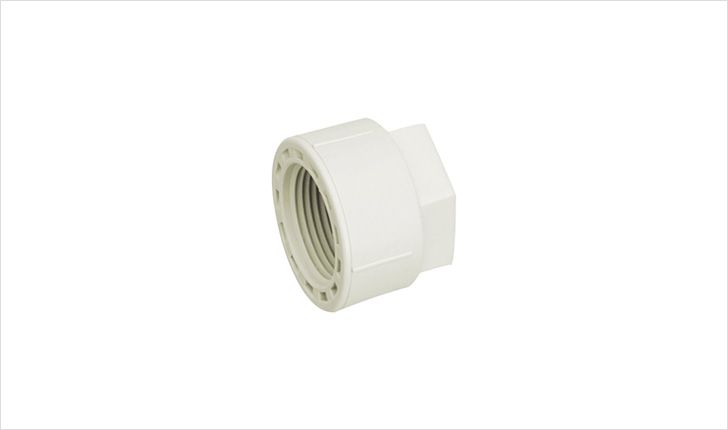
So, temporary sealing is used when access to the pipe is difficult and involves the use of a special polypropylene plug with an internal thread. Before installing it using a plate of the appropriate size on plastic pipe an external thread is cut.
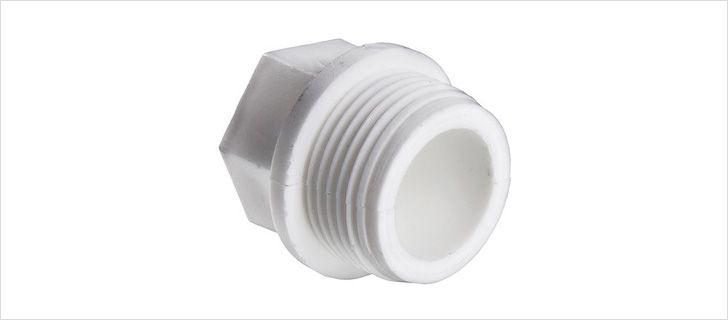
Note! To permanently block the plastic channel, it is best to use a special welding device (soldering iron). The adhesion of elements in such a compound is carried out at the molecular level, which provides it with the necessary strength. We also note that with the help of a soldering device, you can also fix an ordinary plastic plug on the pipe.
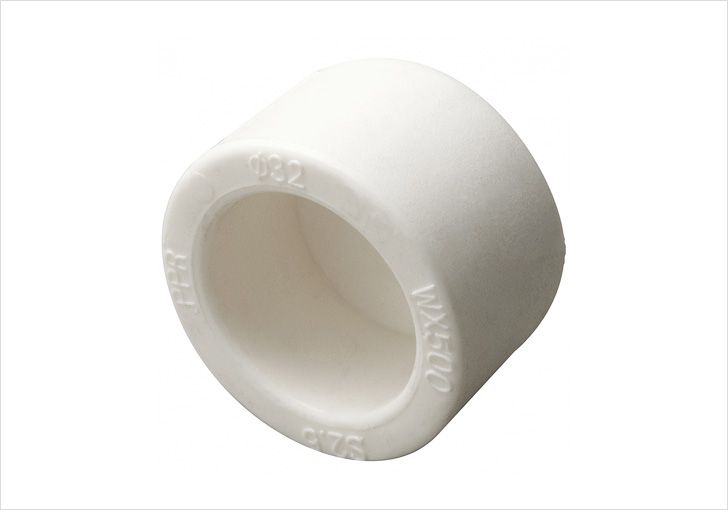
Materials and tools
To carry out work on blocking water pipes of any kind, you will need the following tools and consumables:
- hacksaw for metal or the so-called "grinder";
- a file (rasp) for removing burrs from the ends of pipes;
- sharp assembly knife;
- threading device (if necessary);
- plugs and screw plugs used for temporary and permanent blocking of pipes;
- silicate glue (sealant);
- a welding device with a set of nozzles or a construction hair dryer (for sealing plastic pipes).
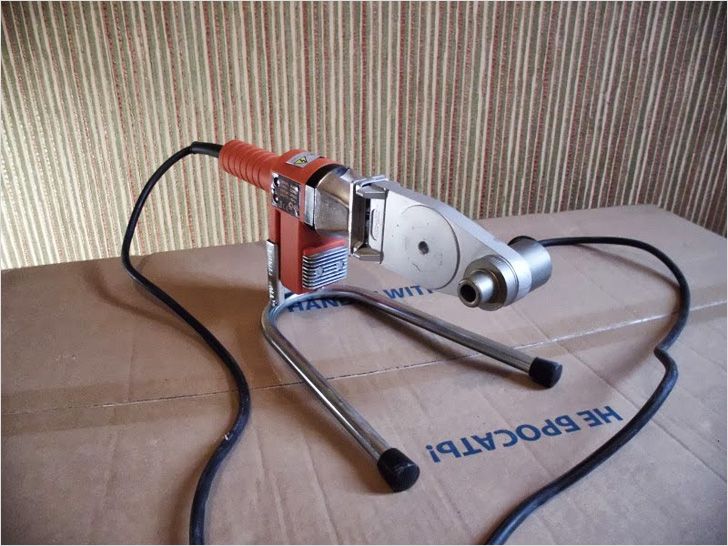
In conclusion, we note that work on blocking the end holes of pipes, as a rule, does not require special skill from the performer. At the same time, almost all working tools (with a few exceptions) are always available in any household.
The pipe plug can perform a variety of tasks, from closing end holes on pipelines to giving a complete decorative look to a structure.
1
Now there is a huge variety of elements of interest to us. They are divided into different groups depending on certain indicators and performance characteristics. First of all, pipe plugs are classified according to the materials from which they are made. From this point of view, they are:
- metal;
- rubber;
- polyethylene and plastic;
- chrome plated.
Perhaps the most common today are metal plugs. They are installed on sewer and water supply steel and cast iron mains, used in pipelines through which gas is supplied. Metal products are indispensable for industrial purposes. They are also used very actively in household networks. Metal plugs have high strength and operational reliability. But they have a serious drawback - they are prone to rusting.
Therefore, now, when building household and communal water supply networks, as well as cast-iron sewerage, instead of metal plugs, they are trying to use more modern plastic plugs, which are characterized by a high degree of corrosion protection. Metal plugs are most often brass and steel structures. Brass products are sufficiently resistant to corrosion. But their cost is high. Steel plugs are cheaper. But as we said, they rust. And the installation of such products is always a laborious procedure.
Modern plastic plugs for sewage
Corrosion is not terrible with polyethylene and pipes. True, under the influence of the rays of the sun and high temperatures, they are able to deform. The undoubted plus of such traffic jams is their low cost. Most often they are used as internal plugs for pipes (for profile and round) and as plugs for the fence. Note! It is undesirable to use plastic and plastic plugs for.
Rubber articles cannot be secured securely. They are very flexible. Therefore, it is unrealistic to use them as retaining fittings. As a rule, rubber structures are installed on different lines for the same purpose. They protect sewerage and water supply networks from debris and dirt entering them. It is elementary to mount rubber plugs (round and other shapes) - they are simply pushed into the pipeline at the desired site.
Steel products with special chrome plating are a kind of conventional metal plugs... They are decorative designs. Their appearance is shiny and radiant, ideal for adding beauty to various structures. These decorative fittings are often used to decorate a pipe fence that protects a private property, or a fence around a public facility. Chrome-plated steel fittings are not afraid of corrosion and are characterized by a long service life. Moreover, the cost of such pipe plugs is objectively high. This is due to the high costs of manufacturers for their production (complex technology, high cost of chrome coating).
2
The products described in the article are divided into different types depending on their design features. In this case, the following types of pipe plugs are distinguished:
- spherical (otherwise - elliptical);
- pneumatic;
- threaded;
- shipping;
- end;
- flanged.
Spherical steel fittings are made of alloys 12X18H10T, 09G2S, 12X18H10T, 08X18H10 and some other metallurgical compositions. Such plugs are suitable for shutting off certain sections of pipelines. In addition, they are used to equip the bottoms of various industrial tanks. Steel elliptical products are installed by welding. And they are always produced using stamping technology.
Spherical plugs can also be made of rubber. Such designs are made in the form of a durable inflatable ball, which is equipped with a special pump with small dimensions. This pneumatic plug is inserted into the pipeline and then inflated with air. As a result of the expansion, the pipe opening becomes completely blocked. A simple pneumatic plug can only cost a few dollars. But the price of such products, used on large industrial routes, usually amounts to hundreds or even thousands.

Spherical pipe plugs
Municipal and private water supply networks are often equipped with threaded damping elements. They cost a penny, but in their work they show themselves to be quite reliable products. They are installed, as the name implies, on the thread on the pipe. Threaded round plugs are plastic (rarely) and metal (the main assortment of such fittings consists of them).
The shipping plugs have a one-piece elementary structure, which requires simple fasteners (mechanical). They are made in the form of a kind of cap or cover.
Transport round and profile plugs are needed to protect pipes during their transportation. The task of such products is to protect pipe products from debris. As a rule, shipping plugs are made of plastic. Metal plugs are less common. The shipping products are functionally similar to the end caps. The latter are mounted on unused (temporarily or permanently) pipeline sections. They also keep the pipes from clogging.
Flanged products are made from rubber or metal alloys. They are mounted with special rivets or ordinary bolts. The specified fasteners are placed in special holes that are cut in the upper area of \u200b\u200bthe plug. The advantage of such plugs is the ability to dismantle them at any time, and then reinstall them. Everything is done quickly and without unnecessary complications.
3
The details we describe are always selected taking into account the characteristics of specific pipes and lines constructed from them. In this case, it is imperative to take into account both the functional purpose of the pipelines and the material from which it is made.
- It is undesirable to use rubber and plastic plugs for hot water pipes and heating systems. At elevated temperatures, such products can be seriously damaged. Better to invest in more durable metal plugs.
- Pneumatic plugs and screw plugs must not be installed on gas lines. They will not provide the required level of sealing.
- If the plug is needed to block any type of line for a long time, it is best to use flanged or elliptical products.
- The shape of the pipe and the plugs used for it must always match. Round plugs should be installed on round pipes, and square products on profile structures.
- Special plugs must be installed on the downhole pipes. They are placed at the bottom end of the pipe structures. Such plugs are necessary to prevent water from flowing past the filter device into the wellbore.

Special plug for well pipe
Let's talk separately about the selection of plugs for the fence. Nowadays, many types of fences are built from tubular products. Therefore, this question worries many people. The choice of plugs for the fence is quite simple. If you need to close the ends of metal pipes, purchase plastic or steel products. It is desirable that they be fastened by means of a bolted hidden connection. In this case, metal plugs will not rust for a long time.
Plastic covers to protect the ends of the fence pipes can be bought very cheaply. But you need to remember that such fence products very quickly lose their appearance when exposed to sunlight. Yes, and they break even with minor mechanical loads quite often. Therefore, experts recommend always buying metal plugs for decorating a fence.



